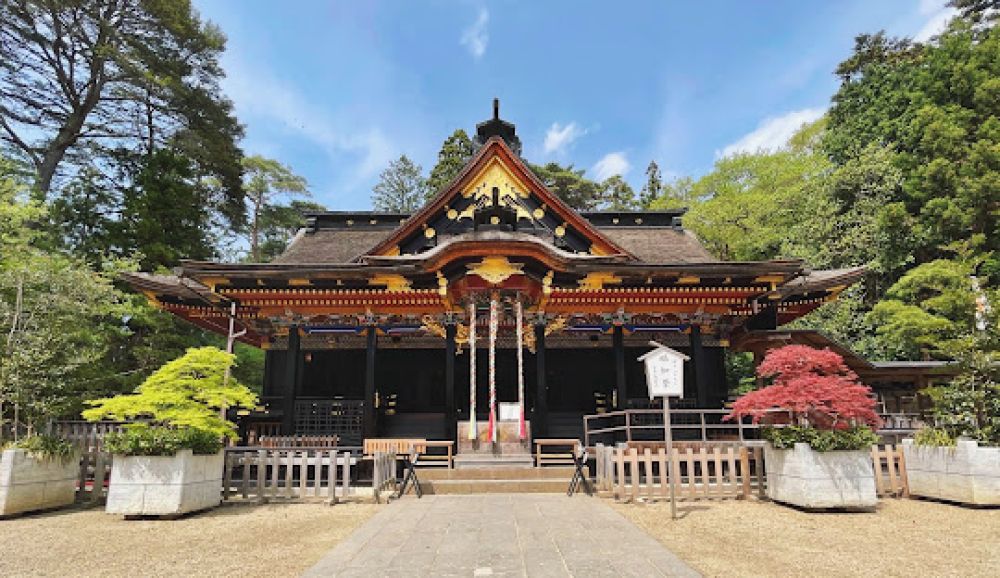

The Osaki Hachiman Shrine situated in Sendai, Miyagi Prefecture, has long been steeped in history and is an embodiment of the city’s spiritual landscape. Founded by the legendary daimyo Date Masam,une in 1607, the shrine celebrates over 400 years of history. Dedicated to the Shinto god of war, Hachiman, it has also played a pivotal role in the local community as a guardian deity.
Recognized as an Important Cultural Property by the Japanese government in 1952, Osaki Hachiman Shrine is renowned for its striking black lacquer adornment and ornate gold leaf embellishments — a hallmark of Date Masamune's era. The distinctive architectural style, flamboyant yet elegant, is reflective of Momoyama period architecture, making the shrine an invaluable piece of cultural heritage and a popular attraction for history enthusiasts.
Throughout its history, the shrine has not only been a place of worship but also a key destination for tourists seeking to immerse themselves in the cultural and historic tapestry of Sendai. In recent years, the shrine has observed a significant shift in tourism trends.
Presently, a surge in interest for authentic, local experiences has seen visitors engage more deeply with the shrine’s offerings. This includes participation in local festivals, such as the annual Osaki Hachiman Shrine Autumn Festival, which is vibrant with processions of portable shrines (mikoshi), traditional music, and dance performances. The increase in experiential travel has seen tourists partaking in Shinto rituals, attending cultural workshops, and exploring the serene shrine grounds to witness nature’s seasonal transformations.
Acknowledging the global emphasis on sustainable tourism, Osaki Hachiman Shrine has also started to integrate eco-friendly practices into its maintenance and festival activities, reducing waste, and promoting environmental consciousness among visitors. The shrine’s digital presence has been enhanced, offering virtual tours and interactive content for those unable to visit in person, a trend accelerated by global travel restrictions in recent years.
In line with the latest tourism trends, the shrine actively collaborates with local businesses to bolster community engagement. Special programs that combine shrine visits with local dining experiences, craft workshops, and traditional accommodations have been developed. These collaborative efforts help support the local economy while providing tourists with a rich, integrated cultural encounter.
Looking forward, the Osaki Hachiman Shrine is poised to remain an essential fixture in Sendai’s tourism landscape. With continuous efforts to preserve its historical integrity while adapting to contemporary trends, the shrine ensures a captivating and meaningful experience for both the devoted pilgrim and the curious traveler.